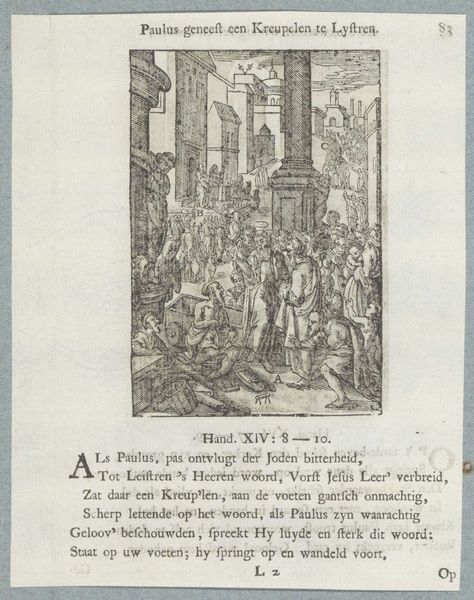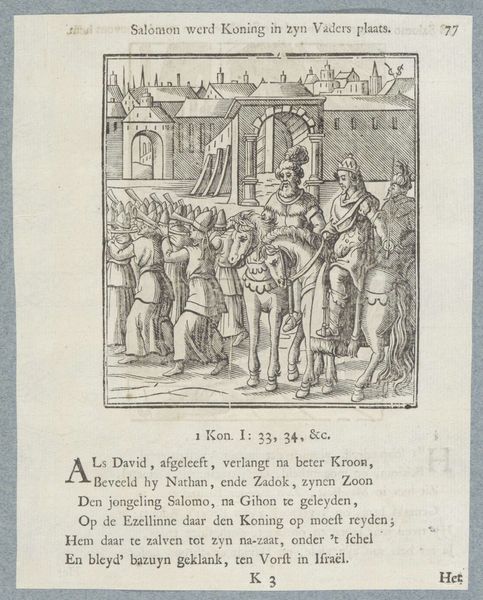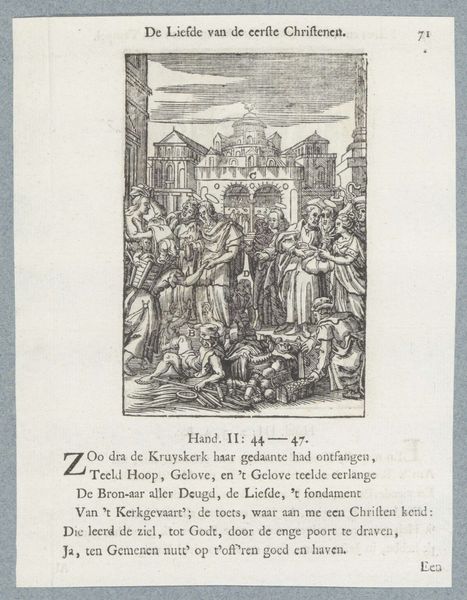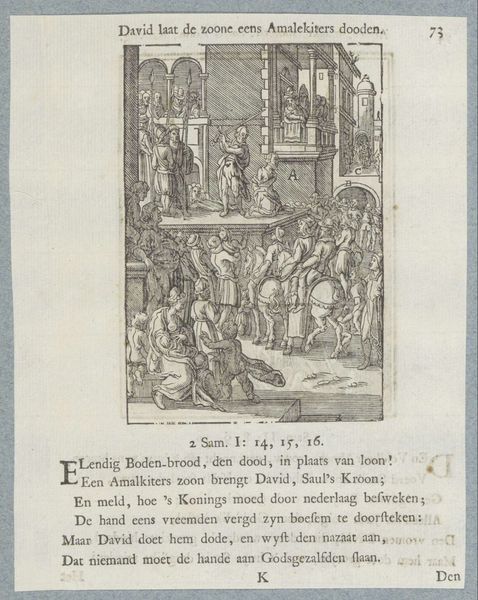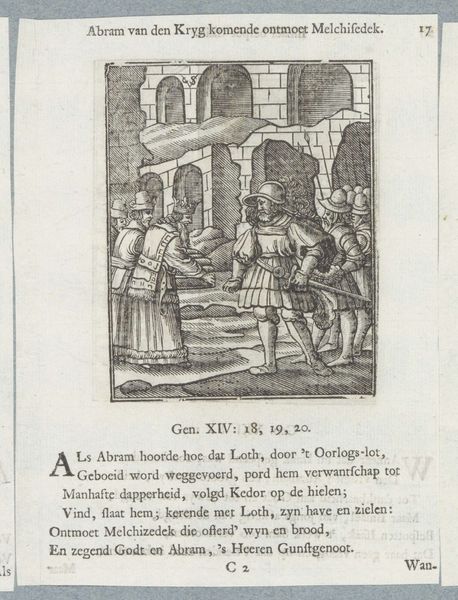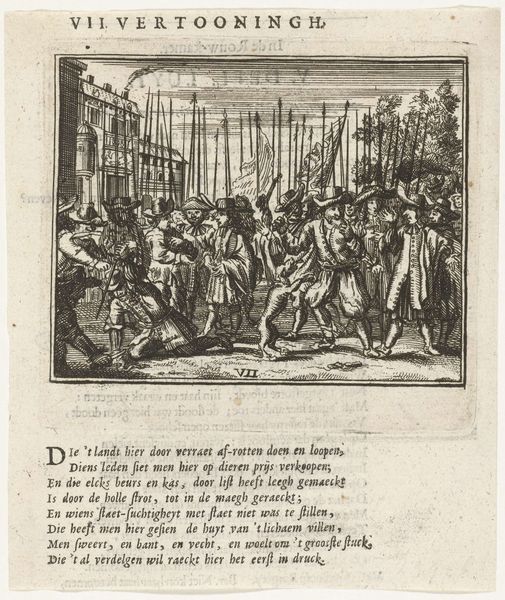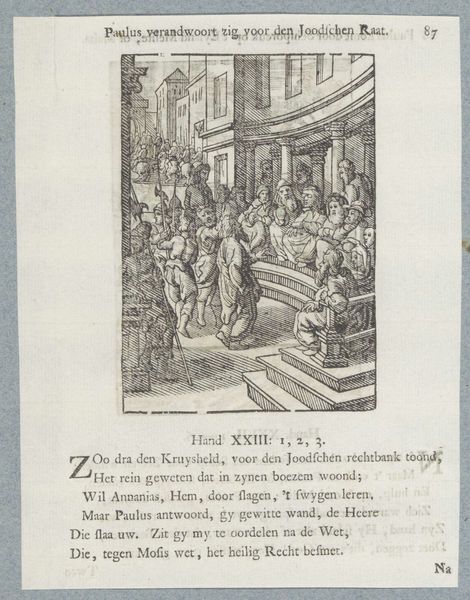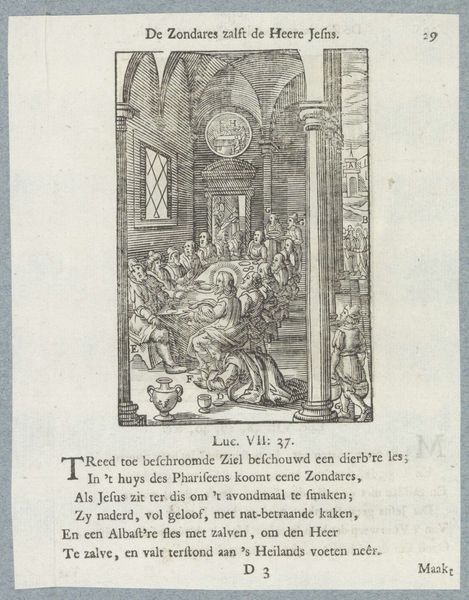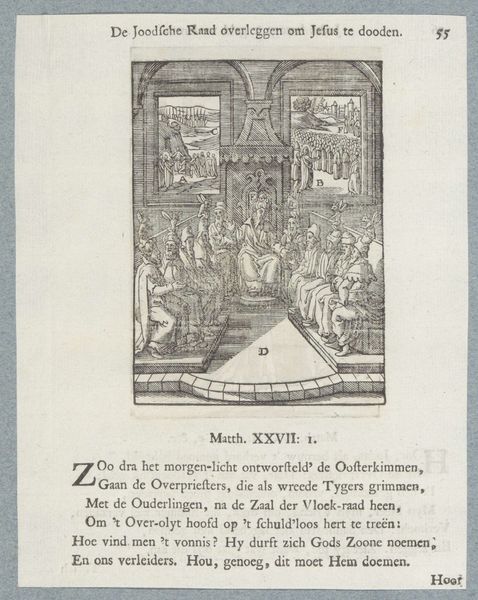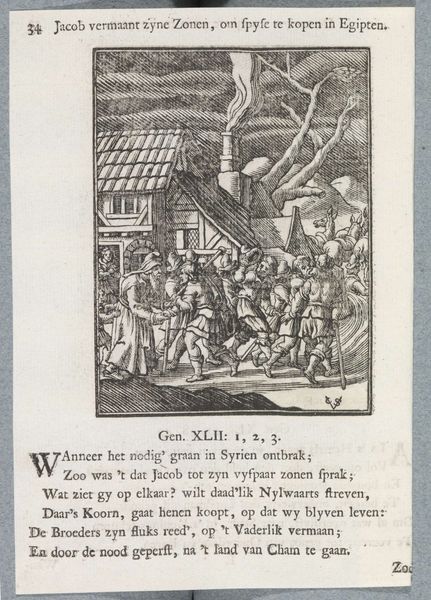
graphic-art, print, engraving
#
graphic-art
#
narrative-art
#
baroque
# print
#
figuration
#
history-painting
#
engraving
Dimensions: height 108 mm, width 75 mm, height 171 mm, width 135 mm
Copyright: Rijks Museum: Open Domain
Editor: This engraving, “Gevangenneming van Paulus in Jeruzalem” from around 1629-1740, by Christoffel van Sichem II and in the Rijksmuseum collection, is really intense! The chaotic scene feels like a powder keg about to explode. How do you interpret this work? Curator: This print powerfully depicts the clash between belief systems and economic interests. It invites us to consider the disruptive force of new ideas, particularly those challenging established social and economic hierarchies. Editor: I hadn't really thought about it that way, could you elaborate? Curator: Certainly. Note how the figure of Paul is being violently seized, yet his followers remain defiant. What does it tell us about the era that such depictions, especially relating to religious turmoil, were made into widely available prints? And who would want to depict Paul as such a divisive figure, stirring up such fervent passions? Editor: Perhaps it's commenting on the potential dangers of radical ideologies? Curator: Precisely. We might also consider the economic dimension. The text refers to Diana, worshipped in Ephezen, and the silver trade, linking belief with livelihoods and posing questions about the exploitation of local religious beliefs and traditions in favour of other spiritual ideas and beliefs. Doesn’t it also suggest the deep intertwining of power, belief, and resistance in early modern society? Editor: I see. So, it's not just a religious scene, it is about the challenge to the entire structure of society. Thanks. Curator: Exactly! By examining such images, we unearth the complex interplay of faith, politics, and economy, making these historical moments vividly relevant to contemporary discussions around social justice.
Comments
No comments
Be the first to comment and join the conversation on the ultimate creative platform.
